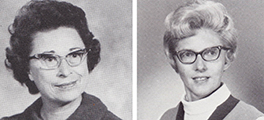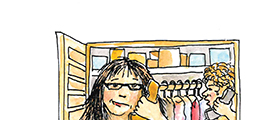Jake’s Mountain
By Brian Faulkner
It was one of those nights. The wind was prowling around outside, and Jack’s father wasn’t home yet. A storm was coming, and he would be on his way from work. As soon as the dark crept up the mountain and chased the last pale shards of December sunlight from their tin roof, Jack began listening for the beat up Ford to come chugging up the hill, the truck they used for everything from hard work to Sunday-best. But tonight, its familiar note would be drowned by the wind. So Jack sat with his back to the sparse rooms of their cabin, looking out the window and down the road as the first heavy raindrops hammered the roof like impatient fingers tapping on a steel drum.
Jake guided his old pickup along the familiar — but tricky — dirt road. He had to be careful not to let his mind wander. The storm’s tempo was increasing, and the road had a washboard surface and deep, muddy ditches rimmed with early flecks of ice on both sides. Either one could rear up and bite him. Even so, the man couldn’t help but think about his boy as the truck slowly clawed its way toward home. Jack was an only child and becoming more of a handful at 14 than Jake had anticipated. Since his mother’s death two years ago on the cusp of Christmas, it was about all Jake could do to keep up with him. There were impulses driving Jack that Jake didn’t understand. The son was a dreamer, at least that’s what other folks said, and Jake was anything but. Life was simple: You either were or you weren’t, you did or you didn’t. Jack, however, seemed to slip from one dream to another, held captive by the next possibility. Anything could happen, to Jack’s way of reasoning; all you had to do was think it, and it was likely to come about.
With every pass of the wipers across the Ford’s chilled windshield, Jake saw his son’s image in the glass. Now that Jack was a teenager, he thought, maybe it was time . . . a thunder crash to his right, surprising for the time of year, jarred Jake rudely from his reverie, and he reflexively twisted the steering wheel to the left. The truck’s worn tires, the ones he had been saving to replace for several months now, tried their best to grip the slick surface, but the road easily won out, sliding the battered pickup into the ditch. The engine quit, and the dark fury of the growing storm embraced the truck like a ravenous lover.
There were only two things that truly interested Jack, and they were connected at the heart: dogs and motorcycles. Both had possibilities.
Jake, however, didn’t have much regard for either one. His interest was keeping food on the table — and keeping his son from sliding into the side ditches. Dogs and motorcycles were somewhere “out there,” in a world he didn’t have time for. His pronouncement on the subject was that anything that takes too much work for too little return when every nickel counts, isn’t worth a passing thought.
Jack had seen what might be described as a real motorcycle only once. It wasn’t one of those dirt bikes some of the locals rode crashing through the woods, but a new Harley-Davidson. It had been parked outside Scooter’s Garage one day, as unlikely an apparition to appear in front of that decrepit establishment as could be imagined. The Harley was all muscle and chrome and looked like it was going a hundred miles an hour standing still. Jack promised himself that if he could get up the courage, he’d walk over there to Scooter’s just as cool as could be and “check it out” when they were done shopping, but by then it was gone. So he just stood there, milk jug in one hand, bag of potatoes hanging from the other, staring at the empty spot, a vision of himself and that magnificent machine hurtling through his mind, hunkered down against the slipstream, the song of the road and the lure of endless opportunity playing in his head.
His father knew all about that. There had been a time for dreams — once, before the realities of family life had enveloped him like a cloud and corralled his thinking. Life was like this old truck, he mused with a long sigh, releasing his seatbelt; it couldn’t help but be what it was. Things just happened, and you got on with what came next. Jake reflected briefly on that private wisdom, then thrust the door open and climbed out into the cold rain, determined to face the mean edge of the storm the same way he faced everything else.
Jack was thinking about “his” motorcycle as the weather marched around the cabin. He imagined himself riding it to distant places — like the scenes he had seen in expensive color magazines at the doctor’s office, his faithful dog running beside him in his mind’s eye, conveniently neglecting the fact that no dog God ever made could keep up with a Harley. To him, the dog and the bike were one, fast and powerful and slightly out of control, throbbing with energy, heavy with potential. The wind charged up the road, slinging rain and wrath against the window, returning Jack’s attention to concern for his father.
The old Ford’s headlights cast ghostly images in the frigid water that sloshed around its front end, which was wedged hat-tight in the ditch, and the regular swish-swash of the wiper blades receded into the distance as Jake trudged up the road. The storm seemed to sense the strength of his will, responding with an impressive slash of lightning and a formidable peal of thunder that rolled through the valley in ever diminishing protest as it moved away from their mountain to seek, perhaps, another more easily intimidated audience. Nothing — no storm, nobody, no situation — not even God himself, Jake declared with grim satisfaction, could faze a man who had looked every storm life could throw at him in the eye and stood his ground. As the rain began to slack and water continued running in small waves down the road to meet him, Jake increased his stride toward the cabin.
Jack had become slightly fearful of his father in recent years. There was a raw intensity under Daddy Jake’s surface, something rough and unfinished that seemed like it could break loose at any minute. But love was there, too, deep and central. He felt it most during the quiet times, when each alone with his thoughts required that no talk pass between them. Some nights Jack had seen Jake on his knees, in the darkened room that still held his mother’s things, head bowed toward the dressing table where she used to sit in front of the mirror, hands on the back of his neck, fingers entwined, twisting strands of thinning hair, as if sifting through his concerns one by one.
The rain was about played out as Jake came within sight of the cabin; staccato drops falling from the trees added to the undercurrent of sound that can enliven Piedmont nights, even in December.
Jack, too, realized that the life had been beat from the storm. The house seemed to settle and breathe again.
Something stirred in Jake, and he was momentarily overwhelmed with a realization that the night was about to take a different turn. He had known such a feeling only once before. It had been early on an October morning when the old truck had refused to start, and the only solution, he knew, was to wait ’til it had a mind to, giving Jake the unexpected gift of five minutes without a task. The dawning sky, which he ordinarily would not have noticed, seemed painted with the Creator’s very hand as the sun burst forth in glory, drenching the mountain in liquid light and torching the trees with orange gold, as a red-tail circled overhead, its piercing cry heralding the coming day. That was as close to a religious experience as he had ever come. God words had never worked for Jake — he never got farther than the part about still waters and green pastures. Then they would fall to the floor like ice shards and shatter into a million pieces.
A noise stopped Jake short. A whimper. Two glowing eyes reflected in the weakening flashlight beam. Just a varmint, Jake thought, and almost went on, but a strange impulse compelled him toward the roadside, where the noise became the sometimes off, sometimes on thump of a tail beating against icy leaves. A pup, small and bedraggled and half frozen, had taken refuge in the undergrowth. Her ears were warm to Jake’s touch, however, and generously populated with burrs, but she gave up her guard as if waiting for this man and this moment. Thin and not much promise, he thought — and two collars, noticed Jake, as he scooped up the tiny wayfarer, turned, and walked back toward the Ford. If somebody who knew what they were doing tried real hard to fix up this little pup, he reflected, snuggling her securely in a pile of worn blankets in back of the front seat, you’d just about have half a dog.
Jack bolted toward the door, snapped to attention by boot steps on the step, knowing with absolute certainty that he had not missed the approaching sound of his father’s truck.
“Time to get the tractor,” Jake said, nodding at his son and already moving toward the shed across the yard.
The Ford gave up its peril slowly, and as Jake worked the tractor’s clutch and gas to gradually increase tension on the chain between them, it yielded to the insistent old Farmall. With a loud sigh and a sudden release of water from its innards, the truck was freed from the ditch. “Let’s go,” said Jake, and father and son ferried their convoy of ancient vehicles up the road toward the beckoning light of the cabin.
Possibility, they say, creeps up on you slowly. But sometimes it just knocks unannounced on your door and, as if in answer to some prayer you’ve all but forgotten, invites itself in and makes itself at home. That’s the way it was with Harley. “It’s got to be Harley,” said Jake, after presenting the pup to his son. “It says so right here on one of these collars: ‘Harley-Davidson,’ so it looks like Mr. Davidson might be missing one of his dogs,” he added, a slight smile playing on his lips. “Somebody cared enough for this little one for it to have two collars,” Jake declared. “Been out in the woods for a while though, so that means fair game for us.”
Jack’s mind turned with confusion. A dog! And a little one at that. “Harley.” He said the name aloud just to test it. All at once, something seemed to click and fall into place, something that felt good and right, as if in an instant the glue had set on that particular bond between boy and dog, man and boy, that rarely happens more than once in a lifetime.
Harley seemed to sense it, too, the tension of not quite belonging yielding to the ease that comes with finding out who you are and where you ought to be.
“She’s a girl dog, Son,” Jake announced.
“Yeah Dad, thanks — thanks a lot . . . Jake,” Jack said in a voice that barely could be heard, stroking the pup’s fur and feeling somehow different.
Jake settled back into the old chair that had stood in that room for what seemed like a century. It’ll be nice to have a lady around the mountain again, he thought — especially here at Christmas. OH
Among other things, Brian Faulkner is a five-time Emmy award–winning writer of magazine-style programming on UNC-TV.










